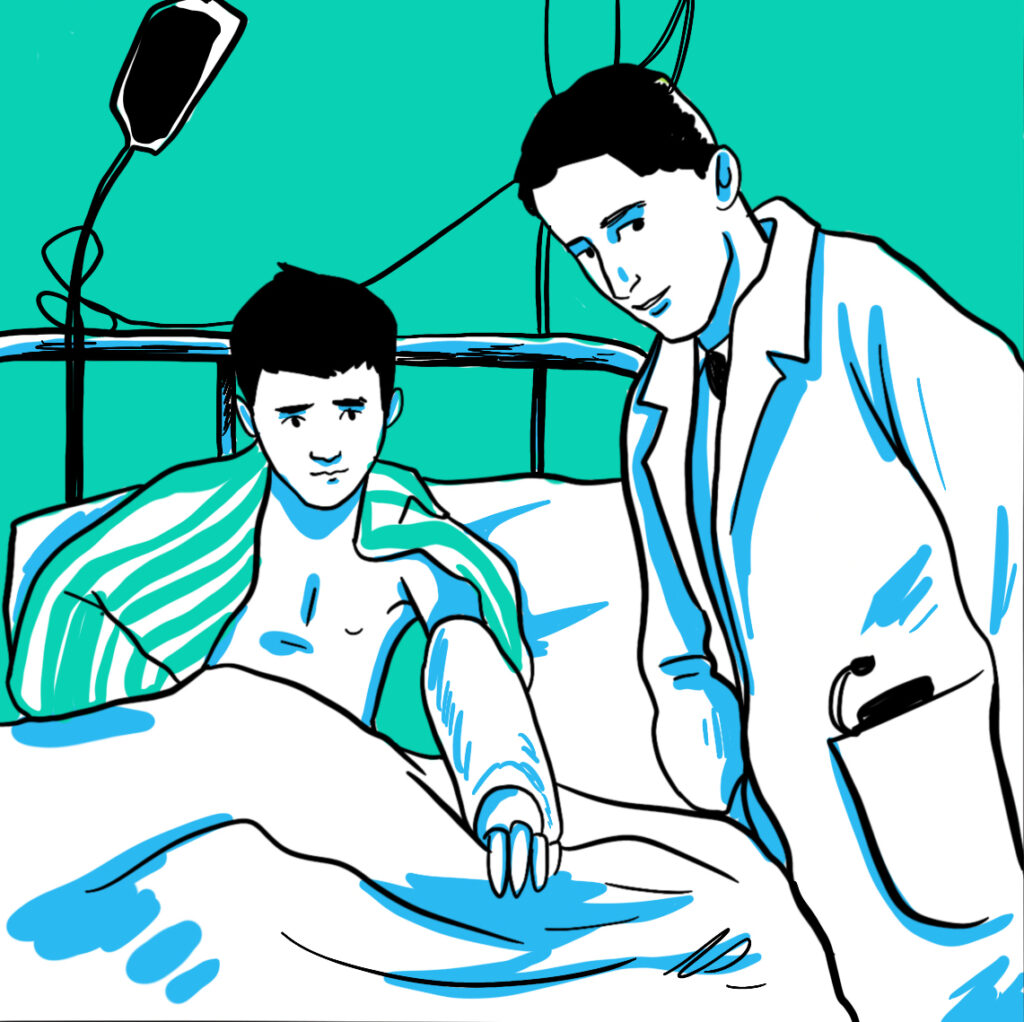Freedom and control: Emi & Me
Prophylactic factor replacement remains the gold standard treatment for people with haemophilia (PwH). Since its introduction, prophylaxis has led to a significantly improved quality of life for PwH. However, some can develop inhibitors to the factor, making it ineffective. As a result, many PwH with inhibitors have had no choice but to treat bleeds on demand using bypassing agents, including Factor Eight Bypassing Agent (FEIBA) and/or activated Factor VII (Novo Seven). With the introduction of emicizumab in 2018, another treatment option is now available.
A novel approach
Emicizumab is a humanised bispecific antibody that was designed to mimic the action of factor VIII, binding to both the activated coagulation factor IX and to factor X. To put it simply, emicizumab doesn’t replace the missing factor but behaves like it. Because it isn’t factor VIII, inhibitors can’t stop it working – which means it can be used effectively as prophylaxis by PwH with inhibitors.
Given under the skin, either weekly, two‐weekly, or four‐weekly, emicizumab has reduced the number and frequency of bleeds for all people with haemophilia A, especially those with inhibitors.
Emi & Me
Reducing and preventing bleed frequency is, of course, key. But with an ever-increasing number of new therapies for haemophilia being developed, it is also essential that we understand what the other benefits of using them might be. The Emi & Me study was designed by Haemnet to explore the impact of emicizumab on the lives of PwH with inhibitors and their families.
Using a qualitative approach, we interviewed 15 PwH with inhibitors and 13 family members about what it is like to take emicizumab. We asked what their lives were like before and after starting treatment with it and what, if any, differences it had made.
Many of the views expressed by the people we interviewed are summarised in this new Haemnet video animation. We saw that emicizumab did reduce the number of bleeds. But more than this, because the treatment can be given less frequently and under the skin, PwH said it reduces the burden of their treatment and gives them a greater sense of control over their lives. This was echoed by many of the family members we spoke with, who also described a sense of freedom for themselves and for their family as a whole.
The bigger picture
Emicizumab has doubtless made a huge difference to the lives of PwH with inhibitors – but we must always be mindful of the bigger picture.
Some of the PwH we spoke with have pre-existing physical disabilities resulting from years of less effective treatment. Along with a lack of support services, this means they haven’t been able to achieve the degree of physical improvement they had hoped for. It’s important that all PwH are enabled to obtain the most benefit possible from their treatment, whatever that treatment is and whatever additional support they may need.
As we go forward and look to see what improvements can be gained from a new medication, it’s also vital that we remember that PwH are part of a family – and that the effects of a new treatment can impact the whole family. In Emi & Me, this impact was positive: emicizumab has given a renewed sense of control and freedom to both PwH with inhibitors and their family members.
Further reading
Fletcher S, Jenner K, Holland M, Khair K. The lived experience of a novel disruptive therapy in a group of men and boys with haemophilia A with inhibitors: Emi & Me. Health Expect 2021;1‐12. doi: 10.1111/hex.13404.
Fletcher S. Seeing the bigger picture: Qualitative research in the Zoom® age. J Haem Pract 2021; 8(1): 141-144. doi: 10.2478/jhp-2021-0019


